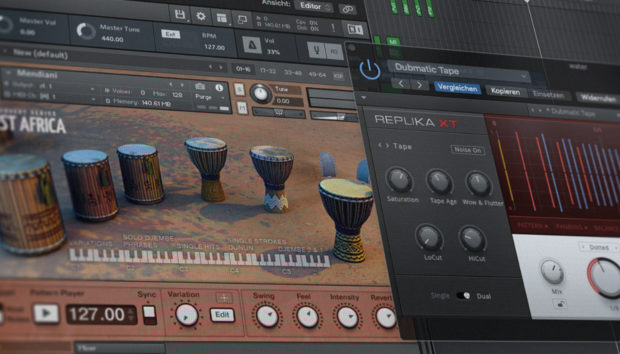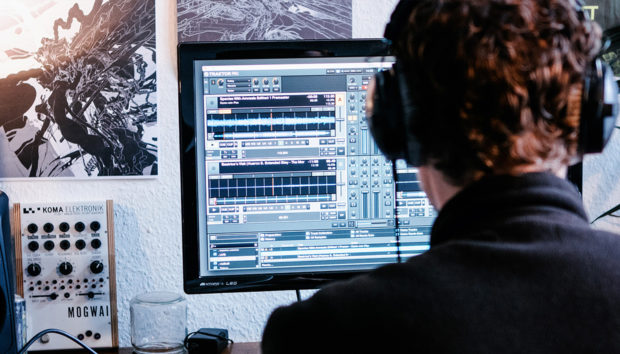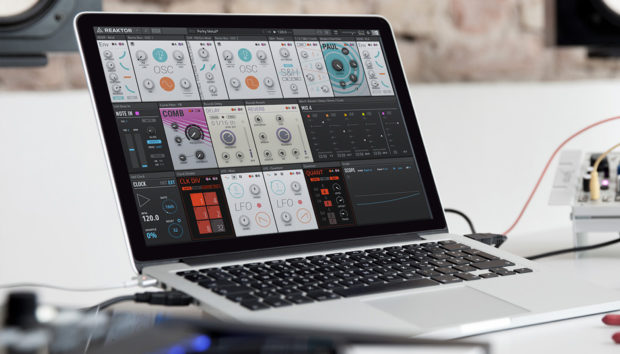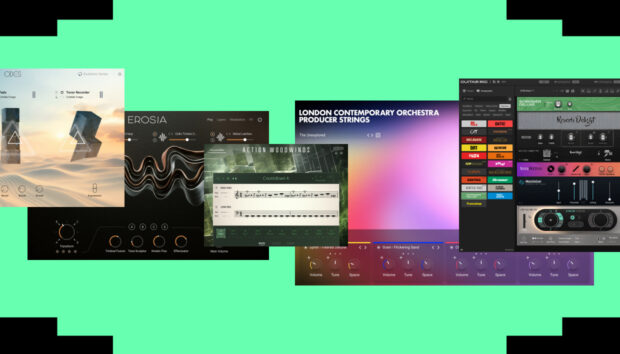Audiojack’s “Rumours” lands as part of Dirtybird’s 20th anniversary and draws directly from the duo’s archive of community-made Reaktor tools. With limited studio time, they rely on pre-built folders of noise generators and rhythmic effects to move quickly without losing their edge. Many of these were sourced years ago from the Native Instruments forum.
For this track, they created a glitch kit using presets like Drox and FM Acid, recording live knob tweaks, and slicing the audio into a playable drum rack. The result is a textured groove that feels intentional but unpredictable, glued together with warped samples and swing-matched cuts. “You don’t waste time figuring out what to use,” they say. “You make music.”
That mindset – paired with the generosity of creators behind Reaktor’s user patches – shapes how Audiojack keeps their sound evolving without overcomplicating the process.
Jump to these sections:
- Why they turned to homemade patches for “Rumours”
- How they selected and prepped Reaktor user creations
- Keeping glitch effects musical
- The role of the NI community in their workflow
- Balancing their own voice with community-created patches
- The evolution of their sound
Here, Audiojack breaks down their workflow on “Rumours” and how community-made tools continue to shape their sound. From glitch experiments to research and development sessions, they walk us through it all.
Download the community-built Reaktor patches that the duo refer to in the interview here:
What drew you to explore homemade synths and noise generators for “Rumours” rather than building patches from scratch?
We’d love to make patches from scratch, but we get much less time in the studio these days. With limited hours, we have to draw from the tools we have amassed over the last 20 years. With those, we can usually create any sounds that come to mind using a combination of samples, synth plugins, and effects, in various permutations.
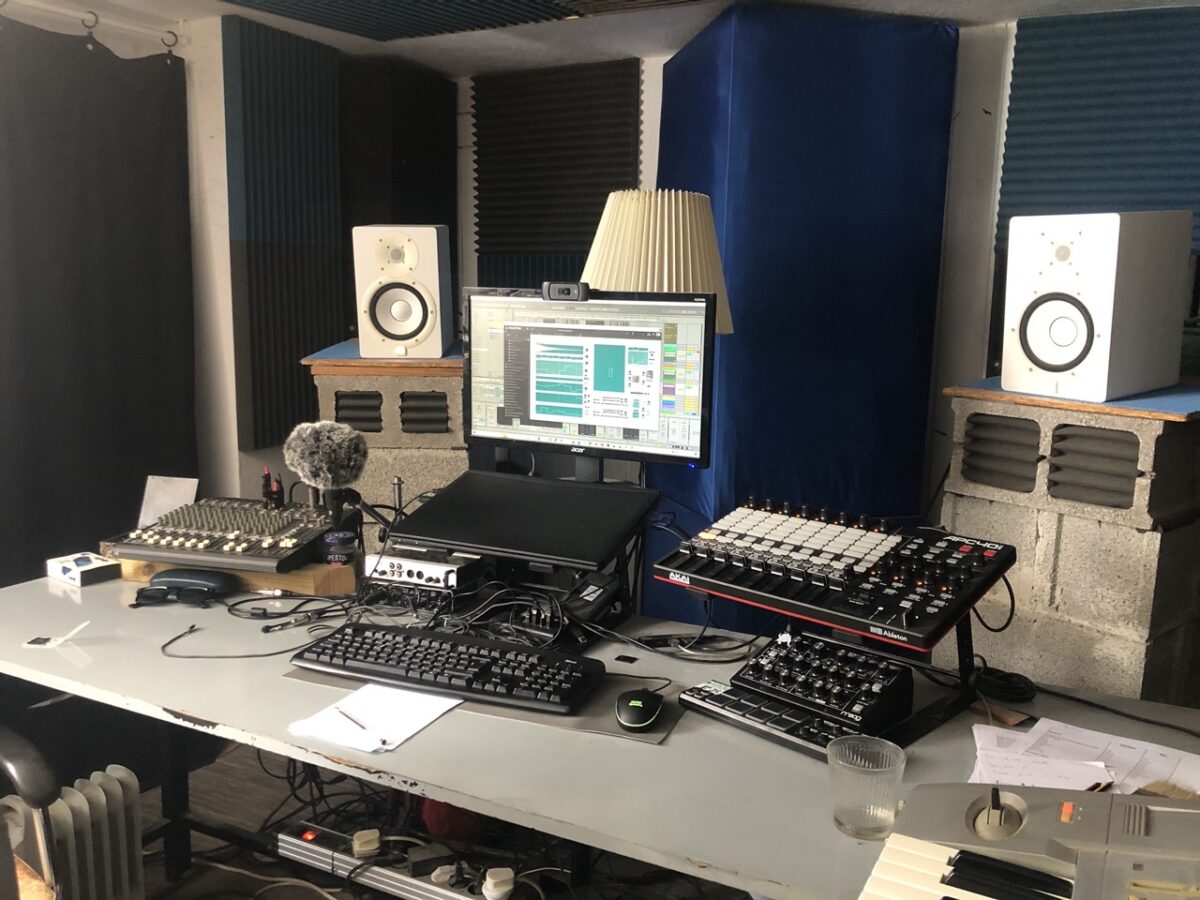
We spent lots of time years ago sourcing great Native Instruments sounds and rhythm generators, so when it comes to adding unusual textures, both rhythmic and ambient, things like Drox, Metaphysical Function, Skrewell, Ginger, and FM Acid are go-to options.
Pro tips from Audiojack: Most producers spend ages digging through huge sample libraries or preset banks just to find their next sound. This slows everything down and kills creative momentum. To avoid that, every couple of months we set aside a week to sort through samples and plugins, building favorites folders and custom banks that fit the style of music we’re currently making. When it’s time to create, that’s the first place we go, so the process is faster, smoother, and the energy of the ideas never gets lost.
Can you walk us through how you selected which Reaktor user creations to experiment with?
Every few months, we’ll have a big research and development session where we’ll dig through samples and plugins and decide what’s going to be relevant for our next few months of writing music. We create a limited set of tools and sounds to work with that will provide the sonic palette for the coming studio sessions. It’s like having a set of instruments to play with.
We also create a template with all of the relevant mixing and creative effects set up and ready to use. It’s like walking into a room full of equipment that’s turned on and ready, rather than going into a music store and having to choose the gear and set it up every time.
During this process, we decided we wanted to have a homemade glitch library that would add a unique twist to the rhythmical elements of our music in the coming months. We went through all of the noise and rhythm generators in Reaktor and found presets that sounded cool. Then we played with the parameters until we found something we liked.
Once that was done, we recorded a couple of minutes of audio while playing around with the parameters. We continued until we had about 20 recordings.
Pro tips from Audiojack: If you want to have a unique and recognizable sound, spend a bit of time creating custom effect racks that you can use in your music. Make them a bit different from the standard things people use.
How do you ensure glitches remain musical and fit in with the groove?
To make the glitches musical, we added a whole bunch of effects. Things like Ableton’s Beat Repeat, which cuts up the audio into rhythmic increments. We then added gates, pitch shifters, auto-panning, bit crushers, and so on, to make the sounds rhythmic and different from the originals.
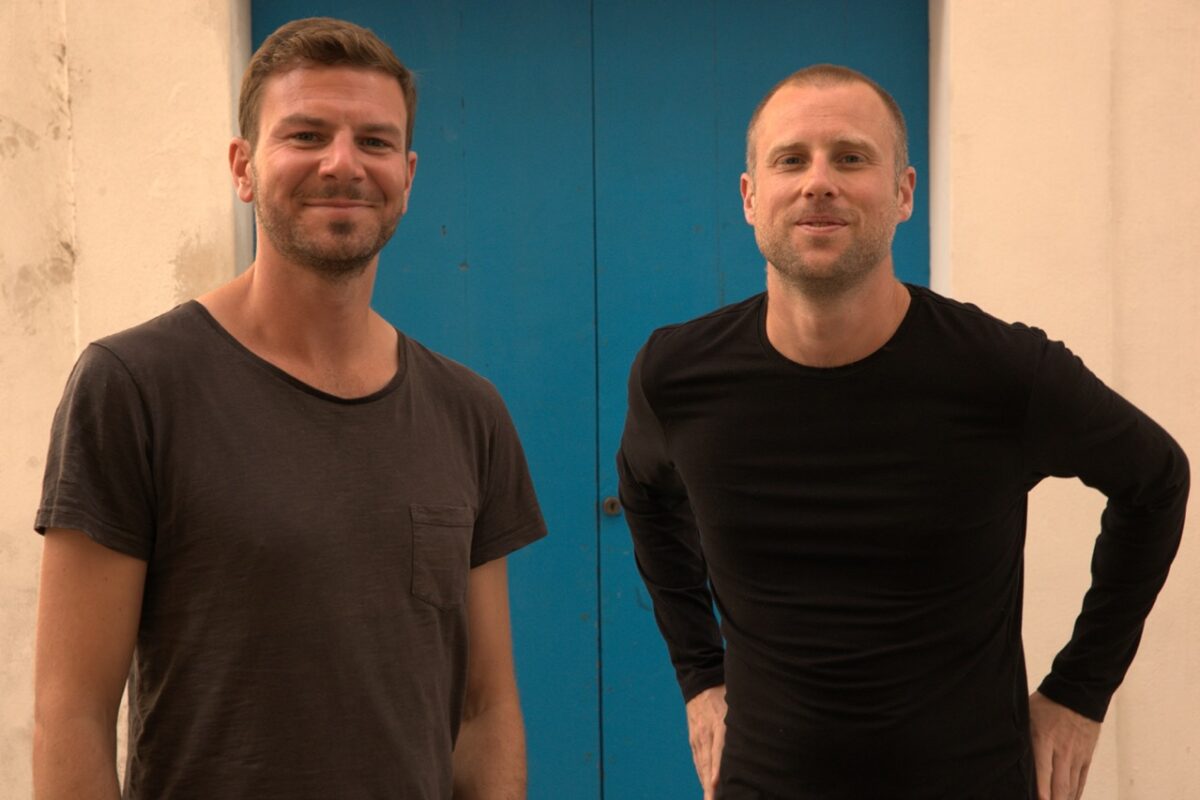
We then bounced automated versions out to audio, so we were left with 20 audio files – all full of diverse, rhythmic sounds. They’re all about two minutes long.
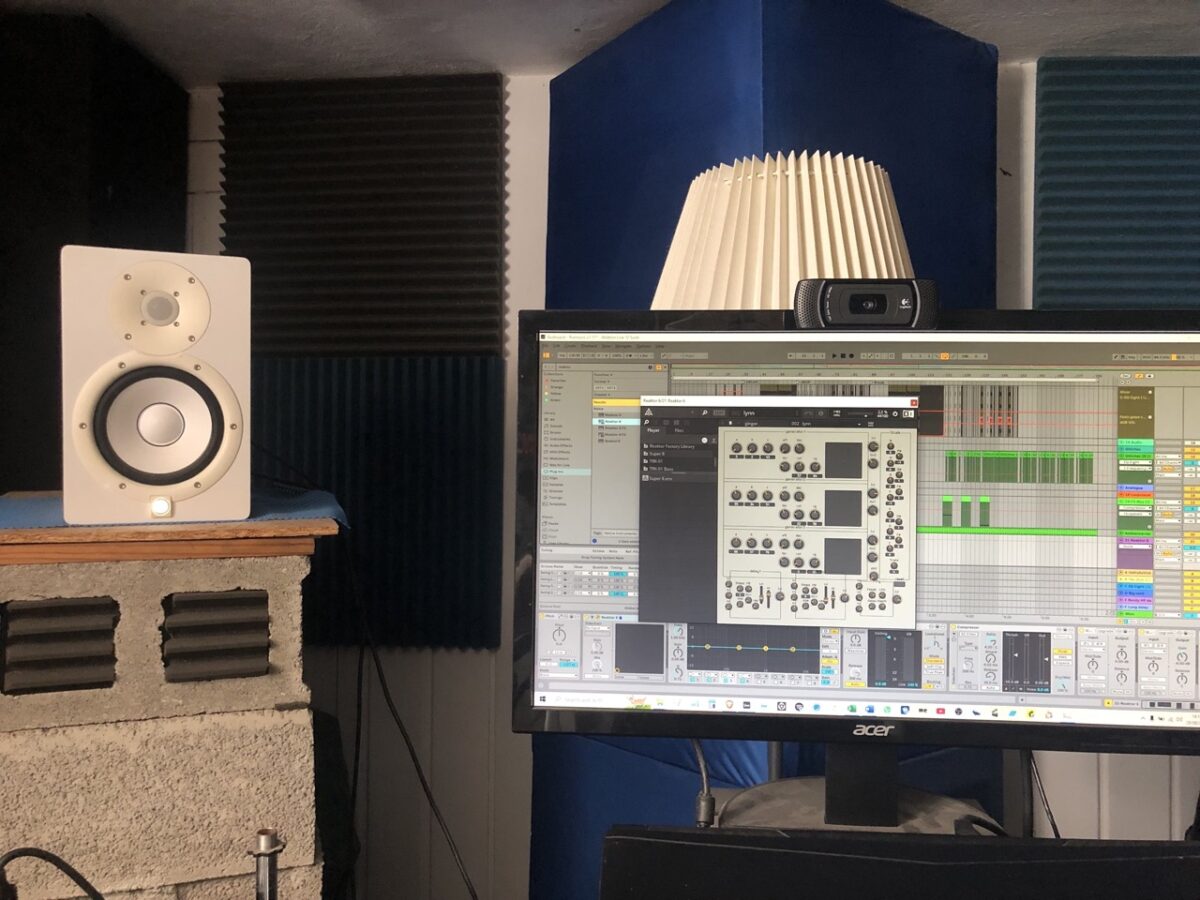
That’s where the pre-writing preparation ends. Once an idea gets to the stage where we’re ready to add some glitch sounds, we simply drag all 20 recordings into a track on Ableton’s session view. Then we audition them one by one to see which ones work in the sonic context.
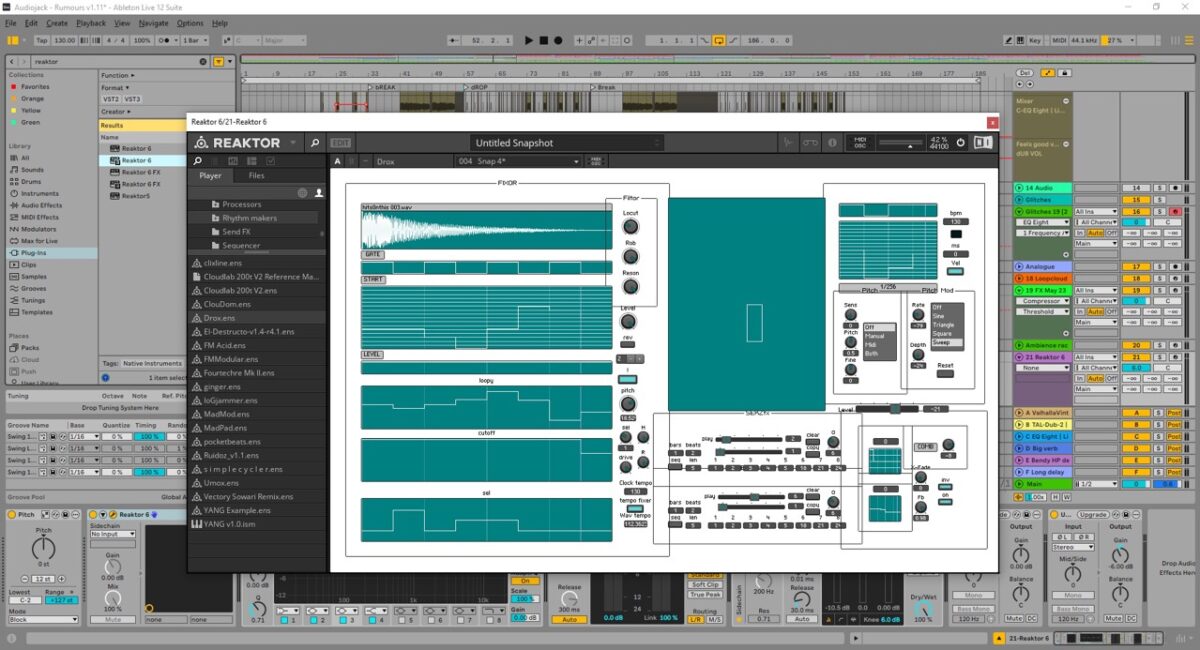
Once that’s done, we chop up the parts into small increments and put them into a drum rack to use them like drum one-shots. This also allows us to independently add further manipulation to each chopped section to taste, like pitch, panning, and ADSR.
We can also adjust the clips to fit the track’s groove perfectly.
Pro tips from Audiojack: Try to think outside the box with sample selection. Use sounds from different genres together, even if they seem like they wouldn’t work.
Do you see platforms like the Native Instruments forum as a way for producers to collaborate indirectly?
Yes, absolutely. And it has to be said that it’s incredibly generous of the creators to give all of these amazing patches away for free.

Although it’s an indirect collaboration, the creators are seldom credited when the music is written and released. So big up to all those people who were working late into the night, tweaking the perfect patch.
Pro tips from Audiojack: A hook in a track doesn’t need to be a catchy melody or vocal. It can just be some unusual sound that’s unique and recognizably yours.
How do you balance using community-created content with developing a sound that still feels uniquely yours?
This is where community-created content is really valuable.
When we began writing our album Surface Tension back in 2017, we wanted to be more diverse and move away from our usual focus on the dancefloor. We found gold in the community forum in the creation of sonic landscapes that sounded other-worldly, which is what we were trying to create.
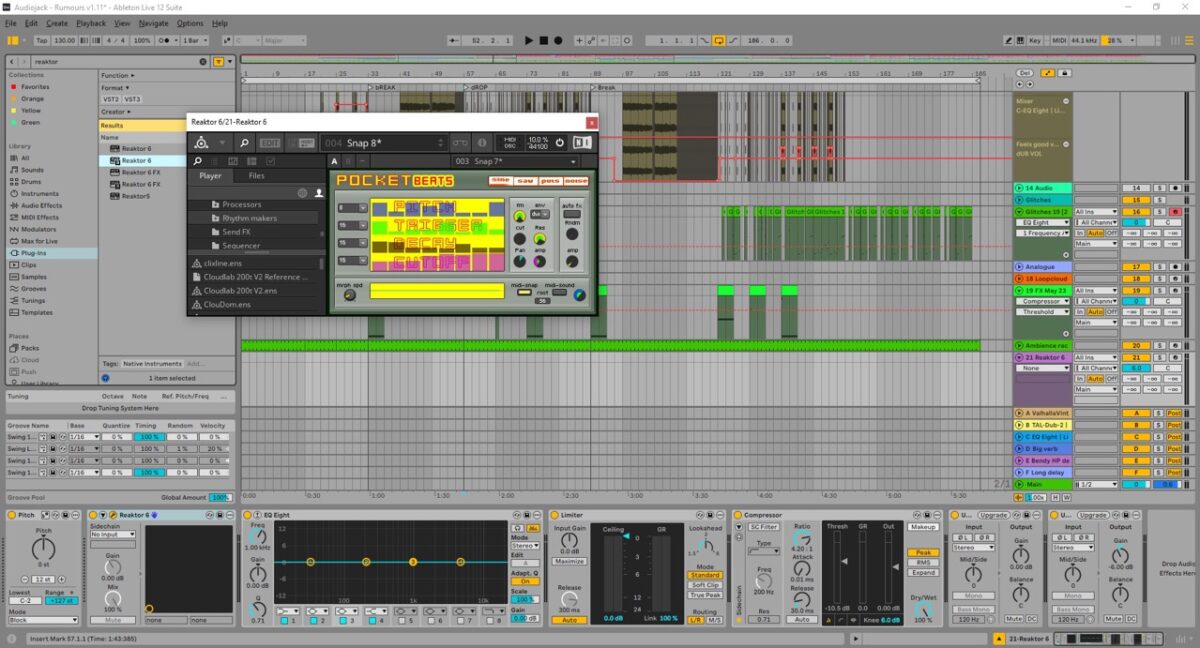
Since then, we’ve always come back to these patches whenever we want to add that twist of flavour to our music, whether it’s for home listening or for the club.
Pro tips from Audiojack: Work on your music until you run out of time in the studio. Then bounce it down and put it on your phone – listen away from where you write. Make notes, and then go back to the studio to make changes. Repeat the process until the tracks are done. This way, you can work on a few different tracks at the same time.
What has kept your sound evolving over the years?
The evolution of our music has always been driven by what music we’re playing at the time. We were DJs first, and the music production was there to help facilitate that, so we could make the music we wanted to play in our sets.

What we’re playing is influenced by the zeitgeist both positively and negatively when we’re inspired or tired of the music that’s out at the time. We often want to make something different from the oversaturated sounds of the moment. We like to come up with something fresh.
Pro tips from Audiojack: Writing music in sections can be very helpful. For example, we spend a whole session looking for sounds. That’s all we do. Then, we’ll write 20 fast ideas using these sounds. We’ll make short loop ideas, capturing the vibe and the groove. We then pick the best ones in order to turn them into full pieces of music.
Wrapping it all up
Huge thanks to Audiojack for breaking down the technical process behind “Rumours” and sharing how community-built tools continue to shape their sound. It’s rare to get this level of insight into how a record comes together from the inside out, especially one that balances raw experimentation with the kind of polish that fits a label like Dirtybird.

If you haven’t checked it out yet, “Rumours” is streaming now as part of Dirtybird’s 20th anniversary series. The track stands out for its use of R&B vocals, glitchy modular textures, and a low-end structure that still hits in a club setting.
Definitely worth a close listen for anyone looking to understand how seasoned producers like Audiojack continue to evolve without losing their edge.
Don’t forget to download the community-built Reaktor patches that the duo refer to in the interview here:
